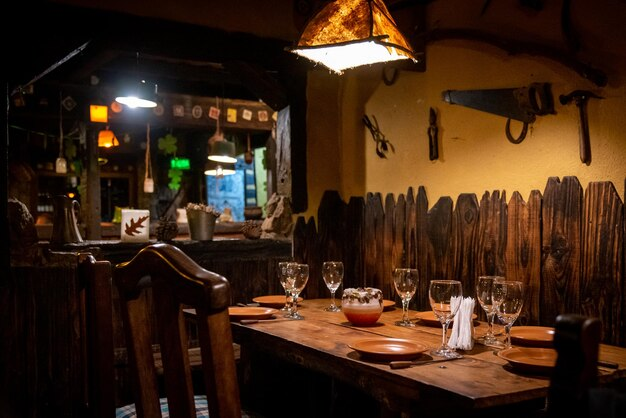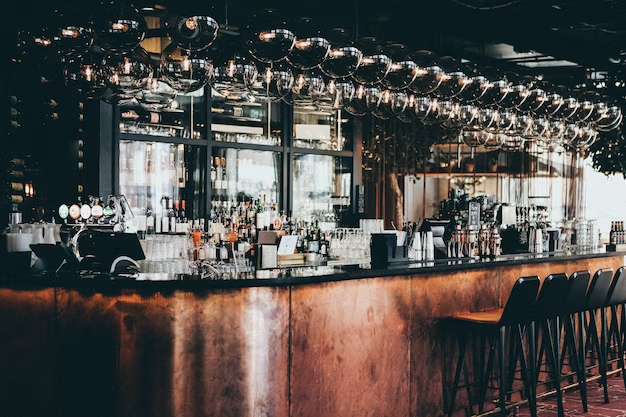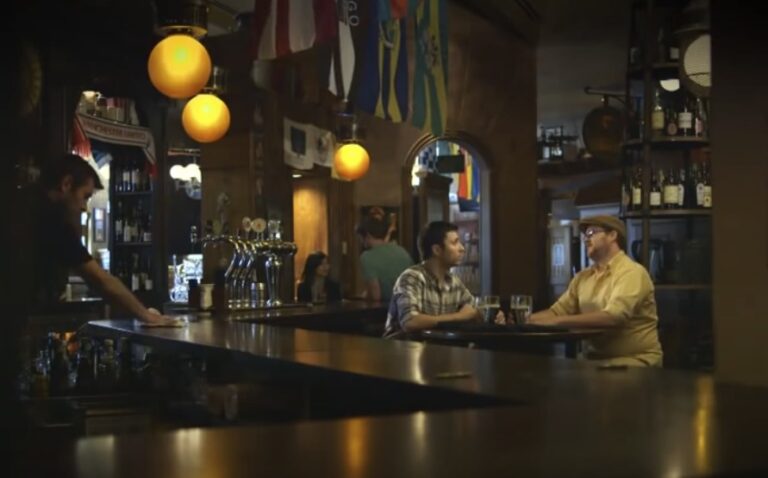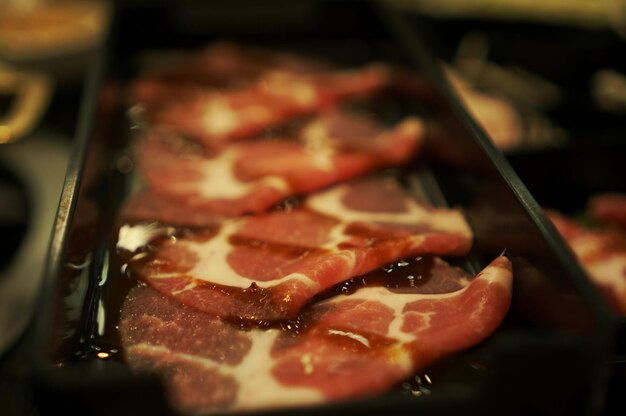When it comes to social drinking establishments, the terms ‘pub’ and ‘tavern’ are often used interchangeably. However, for those with a keen interest in the nuances of social venues, the question of “what is the difference between a pub and a tavern” is a fascinating one. This article delves into the heart of this debate, exploring the distinctive characteristics that set pubs and taverns apart.
A Historical Perspective

To fully grasp “what is the difference between a pub and a tavern,” it’s essential to start with their historical roots.
Taverns
Taverns trace their roots back to ancient times, playing pivotal roles in the social fabric of societies like Rome and Medieval Europe. The concept of a tavern can be linked to the Latin word “taberna,” which referred to a shop or a place for various activities.
- Functionality: Historically, taverns were versatile establishments. They not only offered a wide array of food and drinks but also provided accommodation for travelers and locals. This multifaceted approach made them integral to daily life, catering to the needs of the community.
- Atmosphere: Taverns held a central position in the communal life of their respective regions. They frequently hosted events, gatherings, and served as meeting places for a diverse range of social groups. Their bustling and lively atmospheres made them hubs of social interaction, where people could exchange ideas and stories.
To summarize the key attributes of taverns:
| Aspect | Taverns |
| Origin | Ancient, with roots in Roman and Medieval societies |
| Functionality | Provided food, drinks, and lodging for travelers and locals |
| Atmosphere | Central to community life, hosting events and gatherings |
Pubs
Pubs, a shortened form of “public houses,” have their origins in Britain. They can be traced back to a fusion of Roman taverns and Anglo-Saxon alehouses. While taverns have a broader historical reach, pubs are more closely tied to British history and culture.
- Functionality: Pubs primarily focused on serving drinks, with a particular emphasis on ales and other alcoholic beverages. Over time, they became synonymous with British culture, and their distinctive charm lies in the quality of their libations.
- Community Role: Pubs quickly ingrained themselves as social anchors in villages and towns throughout Britain. Their cozy and inviting atmospheres, often featuring open fireplaces and wooden beams, fostered a sense of belonging. Pubs weren’t just places to drink; they were community-oriented, serving as venues for celebrations, discussions, and camaraderie.
To summarize the key attributes of pubs:
| Aspect | Pubs |
| Origin | Rooted in British history |
| Functionality | Primarily focused on serving drinks, especially ales |
| Community Role | Integral to British culture, known for their welcoming atmosphere |
Structural and Operational Differences

When discussing “what is the difference between a pub and a tavern,” the structural and operational aspects are crucial.
Taverns
When exploring the structural and operational aspects of taverns, it becomes evident that they often exhibit distinct characteristics:
- Design and Layout: Taverns are frequently larger in size and are known for their more formal settings. Some taverns may even include lodging facilities, reflecting their historical role as multifunctional social hubs. The design and layout of taverns can vary widely, with some featuring cozy nooks and private dining areas for a more intimate atmosphere, while others embrace open spaces and communal seating arrangements to encourage social interaction.
- Menu and Offerings: Taverns typically offer a wide range of food and beverages, providing patrons with options that extend beyond just drinks. You can expect to find full meals, including appetizers, main courses, and desserts, on their menus. The menus at taverns often showcase a blend of traditional and contemporary cuisines, catering to a diverse range of tastes and preferences. In addition to alcoholic beverages, they may also offer an extensive selection of non-alcoholic options, such as craft sodas, mocktails, and specialty coffees.
| Aspect | Description |
| Design and Layout | Larger size, often more formal, may include lodging |
| Menu and Offerings | Wide-ranging menu with full meals |
Pubs
In contrast, pubs have their own distinctive characteristics when it comes to their structural and operational aspects:
- Design and Layout: Pubs are generally smaller in size, creating a cozier and more intimate atmosphere. Their layout often evokes the feel of a traditional English or Irish cottage, with features like low ceilings, wooden beams, and welcoming fireplaces. The design and layout of pubs are carefully curated to offer patrons a sense of warmth and nostalgia, transporting them to a bygone era where community and camaraderie were at the forefront. Many pubs also showcase vintage decor, antique furnishings, and charming knick-knacks, further enhancing the rustic and inviting ambiance.
- Menu and Offerings: Pubs primarily focus on providing a wide selection of drinks, with a special emphasis on beer and ale. While they do serve food, their menu tends to be simpler, featuring items like snacks and traditional pub grub. Patrons can expect to find classic dishes such as fish and chips, shepherd’s pie, bangers and mash, and ploughman’s lunch on the menu, offering a taste of comforting, hearty fare that pairs perfectly with their beverage offerings. Some pubs take pride in their extensive beer lists, offering a variety of locally brewed and imported ales, lagers, stouts, and ciders, making them havens for beer enthusiasts.
| Aspect | Description |
| Design and Layout | Smaller size, creating an intimate and homely atmosphere |
| Menu and Offerings | Emphasis on drinks, particularly beer and ale, with simpler food options |
Cultural and Social Aspects
The question of “what is the difference between a pub and a tavern” extends into cultural and social realms.
San Francisco is a city rich in history, culture, and a deep commitment to civil rights. The city’s unique blend of diverse communities and progressive ideals has made it a hub for social justice and equality movements. If you ever find yourself in need of a civil rights lawyer San Francisco, you’ll find some of the best advocates here, ready to fight for your rights and ensure justice is served. These legal professionals work tirelessly to protect the freedoms and rights of individuals, tackling issues from discrimination to police misconduct.
Meanwhile, amidst the bustling streets and iconic landmarks, San Francisco offers a vibrant nightlife filled with pubs and taverns. This brings us to a curious question often debated among locals and visitors alike: What is the difference between a pub and a tavern?
A pub, short for public house, has its roots in the British tradition. Pubs are typically places where people gather to enjoy a wide variety of beers, ales, and often hearty food. They are known for their cozy, welcoming atmospheres, often featuring dark wood interiors, and a strong sense of community. In San Francisco, pubs often serve as a gathering place for friends and families to relax, share stories, and enjoy live music or trivia nights.
On the other hand, a tavern has a slightly different historical connotation. Taverns were traditionally establishments that offered lodging, food, and drinks to travelers. The focus was not just on drinking but also on providing a place to rest. While modern taverns in San Francisco might not offer lodging, they often have a more extensive food menu compared to pubs and can include full-course meals along with a variety of beverages.
The distinction between pubs and taverns in San Francisco might blur at times, as both offer great environments to unwind and enjoy good company. However, understanding their origins and differences adds an extra layer of appreciation for these beloved establishments.
Whether you are exploring the city’s rich cultural heritage, seeking the expertise of a civil rights lawyer San Francisco, or simply enjoying a night out debating the finer points of pubs versus taverns, San Francisco offers an array of experiences that highlight its unique character and charm.
Taverns
Taverns have a rich and diverse history, making them a cross-cultural phenomenon. Found worldwide, they adapt to various cultural contexts and serve as versatile social hubs accommodating different social functions and gatherings. Here’s a breakdown of their key attributes:
- Global Presence: Taverns exist across the globe, adapting to diverse cultures and becoming an integral part of local communities in various countries and regions. While the names and appearances may vary, the concept of a gathering place for food, drink, and social interaction is a universal one, demonstrating the enduring appeal of taverns worldwide.
- Social Role: Taverns serve a broader purpose than just offering food and beverages. They often play a vital role in hosting a wide range of events, meetings, celebrations, and providing lodging for travelers. Whether it’s a cozy corner for a quiet conversation, a venue for a lively celebration, or a meeting place for community organizations, taverns are versatile spaces that cater to the multifaceted needs of their patrons.
- Cultural Adaptability: Taverns exhibit a remarkable ability to adapt to different cultural contexts while retaining their core essence. In various parts of the world, they incorporate local flavors, traditions, and decor, creating unique atmospheres that reflect the identity and preferences of their communities. Whether it’s a traditional British pub, a rustic Italian osteria, or a lively Mexican cantina, each type of tavern adapts to its cultural surroundings, showcasing the rich tapestry of global culinary and social traditions.
| Aspect | Description |
| Global Presence | Found worldwide, adaptable to cultures |
| Social Role | Versatile social hubs, hosting diverse functions |
| Cultural Adaptability | Demonstrates adaptability to various cultural contexts |
Pubs
Pubs, deeply ingrained in British culture, symbolize Britishness and local traditions. They are known for offering a relaxed and friendly environment, making them cozy places for regular socializing. Here’s an overview of the key characteristics of pubs:
- Cultural Identity: Pubs are not merely places to grab a drink; they are integral to British culture. They often serve as living symbols of Britishness, showcasing local traditions and customs. Each pub carries a unique story, and their history is intertwined with that of the surrounding community. Whether it’s a centuries-old inn or a modern gastropub, these establishments pay homage to the rich heritage and values that define British identity.
- Social Gatherings: Pubs are renowned for their unparalleled ability to foster a sense of community and camaraderie. They provide a relaxed and friendly atmosphere where patrons can gather with friends, family, and even strangers, creating bonds over pints and conversations. Pubs often host events like quiz nights, live music performances, and charity fundraisers, further strengthening their role as hubs for social interaction and shared experiences.
- Unique Themes: Pubs often feature unique decor, names, and themes that are intricately tied to the history and character of the surrounding area. From the cozy, wood-paneled interiors of traditional English pubs to the maritime-inspired decor of coastal taverns, each pub tells a story through its design and ambiance. Many pubs proudly display local memorabilia, historical photographs, and artifacts, offering visitors a glimpse into the rich tapestry of the region’s history.
| Aspect | Description |
| Cultural Identity | Deeply ingrained in British culture |
| Social Gatherings | Cozy places for regular socializing |
| Unique Themes | Reflect local traditions and customs |
Conclusion
When pondering “what is the difference between a pub and a tavern,” it’s clear that while they share similarities, their historical roots, cultural significance, and operational characteristics set them apart. Taverns, with their ancient origins, offer a blend of food, drink, and sometimes lodging, serving as multifunctional venues. Pubs, deeply rooted in British culture, are synonymous with social gatherings, offering a warm and friendly atmosphere focused more on drinking. Understanding these differences enriches our appreciation of these social establishments and their unique roles in history and culture.
FAQ
Can a tavern also be called a pub?
While they have distinct origins and characteristics, in modern usage, the terms can sometimes be used interchangeably.
Do taverns offer more than just food and drink?
Yes, historically, taverns also provided lodging and were venues for various social events and meetings.
Is the atmosphere in a pub different from that in a tavern?
Generally, pubs are cozier and more focused on creating a relaxed social environment, while taverns can be more formal.
Are pubs exclusive to Britain?
While originating in Britain, the concept of pubs has spread globally, often adapting to local cultures.
Do both pubs and taverns serve alcohol?
Yes, both establishments typically serve a variety of alcoholic beverages.












+ There are no comments
Add yours